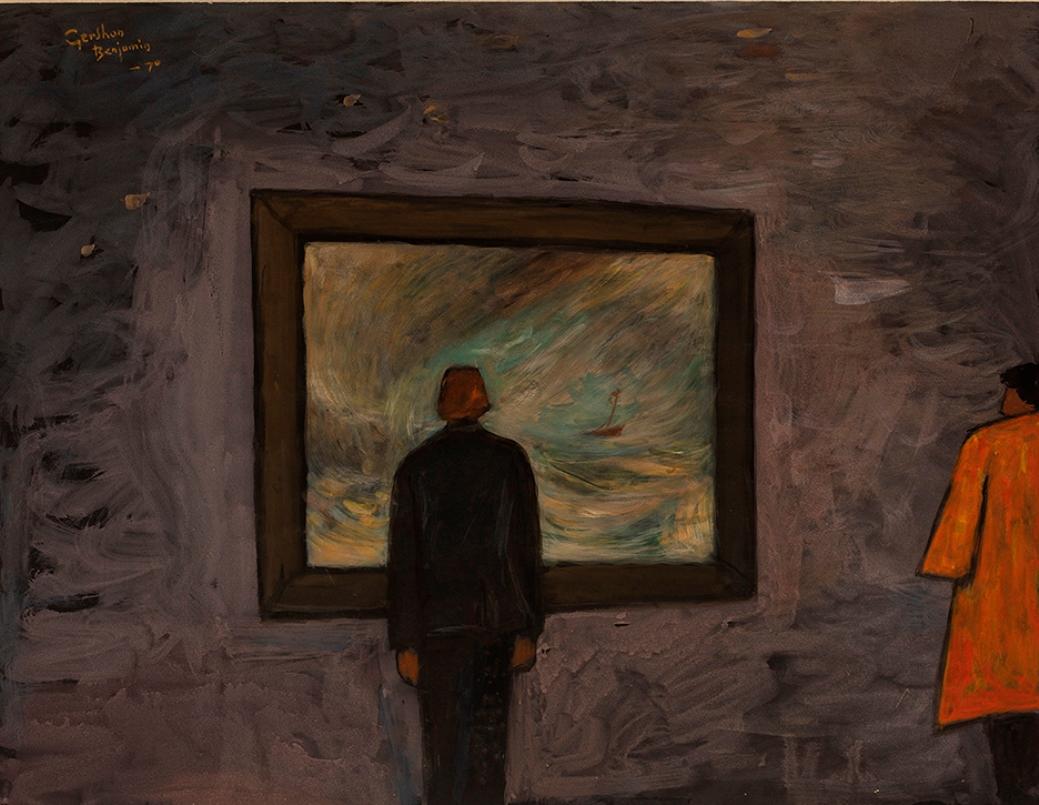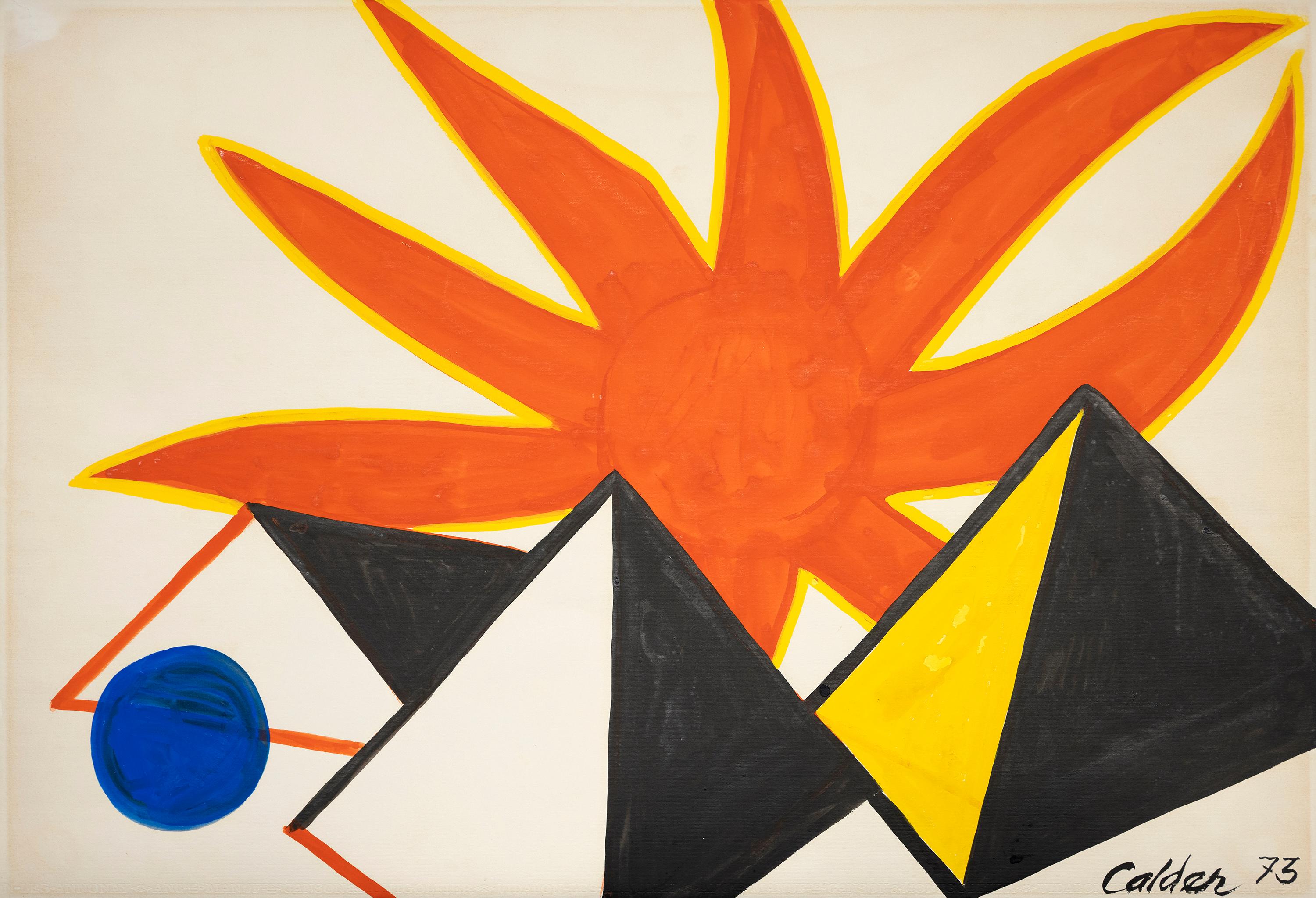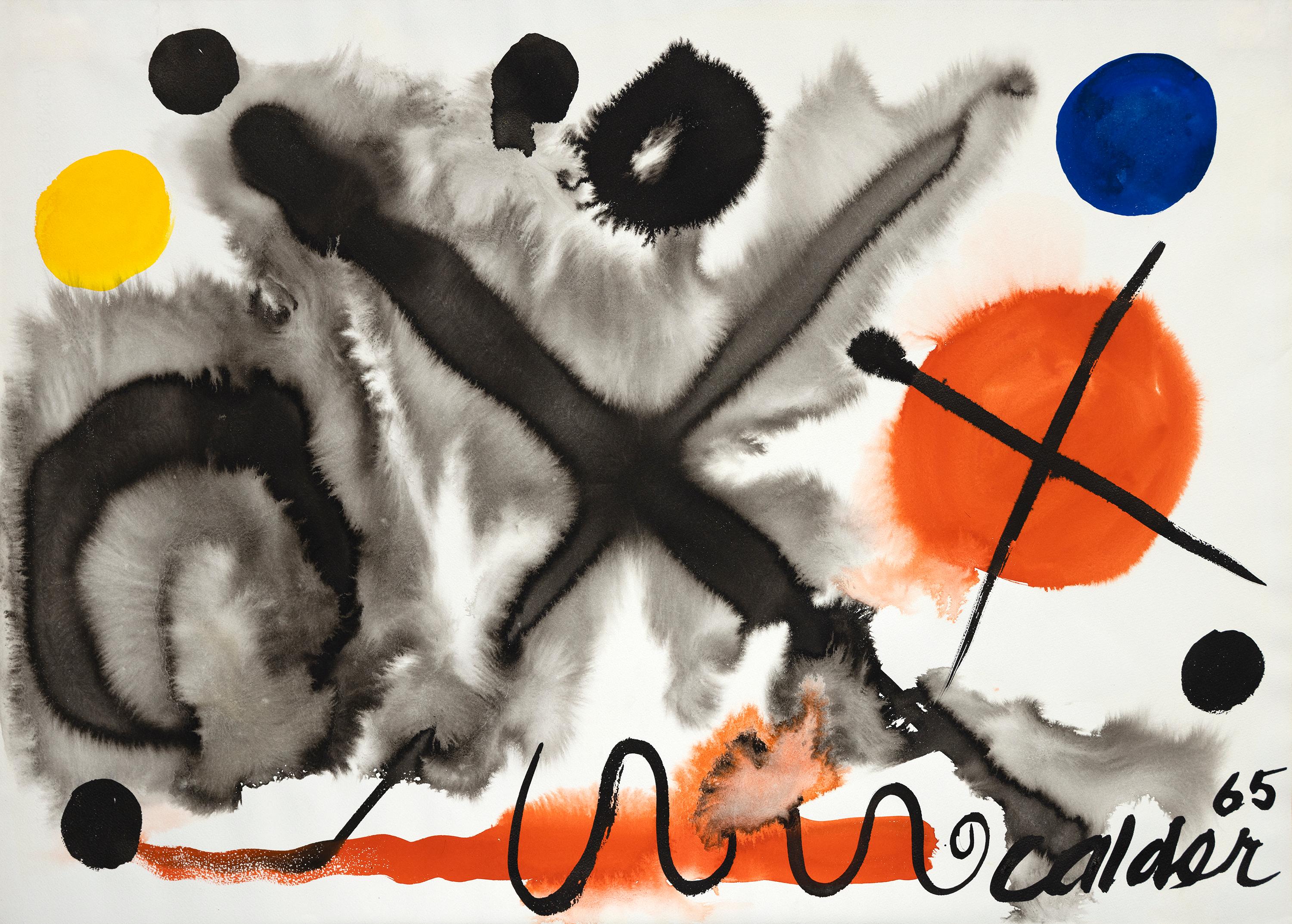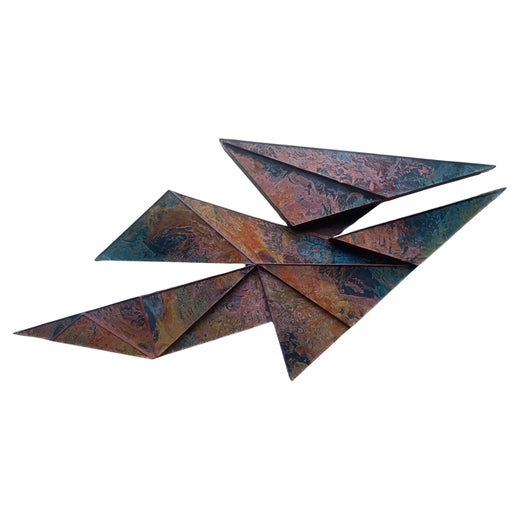Laddie John DillUntitledc. 1971
c. 1971
About the Item
- Creator:Laddie John Dill (1943, American)
- Creation Year:c. 1971
- Dimensions:Height: 24 in (60.96 cm)Width: 19 in (48.26 cm)
- Medium:
- Movement & Style:
- Period:
- Condition:
- Gallery Location:Fairlawn, OH
- Reference Number:
Laddie John Dill
Laddie John Dill was born in Long Beach, California, in 1943. He graduated from the Chouinard Art Institute in 1968 with a BFA. After graduating, Dill became a printing apprentice and worked closely with established artists such as Robert Rauschenberg, Claes Oldenburg, Roy Lichtenstein and Jasper Johns.
A Los Angeles artist, Dill had his first solo exhibition in New York City with Sonnabend Gallery in 1971. He was one of the first Los Angeles artists to exhibit Light and Space work in New York. He exhibited the “Light Sentences” and “Light Plains” sculptures in institutions across the United States and globally, and has enjoyed a resurgence of interest in these pieces in the last decade as well, including an acquisition of a “Light Plains” sculpture by the Museum of Modern Art in New York. It is currently on view in the Museum of Modern Art in Manhattan.
Dill has been crafting light and earthly materials like concrete, glass, sand, and metal into luminous sculptures, wall pieces, and installations since the 1970s. Referring to his choice of materials, Dill explains: “I was influenced by (Robert) Rauschenberg, Keith Sonnier, Robert Smithson, Dennis Oppenheim and Robert Irwin, who were working with earth materials, light and space as an alternative to easel painting.” When Dill does use canvas, he paints with pigments derived from cement and natural oxides.
Dill’s works are in the permanent collections of national and international institutions such as the Museum of Modern Art, New York; the Los Angeles County Museum of Art, California; the Museum of Contemporary Art, California; the San Francisco Museum of Modern Art, California; the High Museum, Atlanta; and elsewhere. He currently lives and works in Venice, California, where he maintains a studio.
Find original Laddie John Dill art on 1stDibs.
- ShippingRetrieving quote...Ships From: Fairlawn, OH
- Return PolicyA return for this item may be initiated within 10 days of delivery.
- Bach Cello Suite No.3 in C Major - III CouranteBy Hildegarde HaasLocated in Fairlawn, OHBach Cello Suite No.3 in C Major - III Courante Watercolor and mixed pigments on paper, c. 1960's Signed and titled recto (see photos) A masterful example of the artist's series of music inspired works of art. Haas had the condition known as synesthesia. Condition: Excellent Archival framing with OP3 acrylic Image size: 17 3/4 x 13 3/4 inches Frame size: 27 1/4 x 21 inches Synesthesia: Throughout her lifetime Haas had a condition known as synesthesia. Synesthesia, as defined by Wikipedia, is a perceptual phenomenon in which stimulation of one sensory or cognitive pathway leads to automatic, involuntary experiences in a second sensory or cognitive pathway. Many famous artists, poets, musicians and authors throughout history have had synesthesia including Vincent Van Gough, Duke Ellington, Billy Joel, and Vladimir Nabokov. Haas' form of synesthesia is known as 'projective synesthesia'. With projective synesthesia Haas saw colors, shapes and/or forms when experiencing audio stimulation. Haas used...Category
1960s Abstract Abstract Drawings and Watercolors
MaterialsWatercolor
- UntitledBy Laddie John DillLocated in Fairlawn, OHUntitled Watercolor on paper. 1971 Unsigned Sheet size: 24 x 19 inches Condition: Excellent From the collection of Ileana Sonnabend (1914-2007) Laddie John Dill, a Los Angeles artist...Category
1970s Abstract Abstract Drawings and Watercolors
MaterialsWatercolor
- UntitledBy Laddie John DillLocated in Fairlawn, OHUntitled Watercolor on paper, c. 1971 Unsigned Provenance: From the collection of Ileana Sonnabend (1914-2007) Laddie John Dill, a Los Angeles artist, had his first solo exhibition i...Category
1970s Abstract Abstract Drawings and Watercolors
MaterialsWatercolor
- UntitledBy Dorothy HellerLocated in Fairlawn, OHUntitled Watercolor on paper, 1990 Signed lower left corner Provenance: Gift of the Artist to one of hr patrons Distinguished Midwest Private Collection Conditi...Category
1990s Abstract Abstract Drawings and Watercolors
MaterialsWatercolor
- The Dead TigerBy Dorothy DehnerLocated in Fairlawn, OHThe Dead Tiger Ink and watercolor on paper, 1955 Signed and dated in ink (see photo) Condition: Aging to the entire sheet (it's 78 years old) Image/Sheet size: 18 1/4 x 23 inches One of a series of watercolors Dehner created in the Hudson Valley and gave to a patron. They are variations of the same composition with differing colors. Titled by the artist in pencil verso. Provenance: Gift of the artist Private Collection, Hudson Valley, NY Dorothy Dehner (1901-1994) Painter, sculptor, art writer, and poet, Dorothy Dehner explored abstraction, cubism, realism and surrealism during her artistic journey. Early in her career she was known for painting and for large-cast metal sculptures, but in the 1950s and 1960s, turned increasingly to wood cut into hard-edge geometric shapes. From 1950, she lived primarily in New York City. Dorothy Dehner was born in 1901 in Cleveland, Ohio, but, as a teenager in 1916, moved to Pasadena, California when her parents died. Her artistic interests were initially in acting. She majored in drama at UCLA for the school year of 1922-1923, then moved to New York City to study acting at the American Academy of Dramatic Art. After travel to Europe in France, Italy and Switzerland in 1925, where she saw Cubist and Fauve paintings as well as the great art of the ages, Dehner entered the Art Students League to study sculpture, but switched to painting because she felt the former was bound in academic formula. She studied drawing with Kimon Nicolaides...Category
1950s Abstract Abstract Drawings and Watercolors
MaterialsWatercolor
- Nickle DrawingBy Dorothy DehnerLocated in Fairlawn, OHNickle Drawing Ink and watercolor on laid paper, 1982 Signed and dated lower right in ink The title references a comment that her husband, David Smith, made regarding her drawings. He said that they were only worth a nickle and the name stuck even thought her works are highly prized. The dating of this work reflects the date inscribed on the watercolor. The style and black ink lines with dots terminating the line is a compositional device the artist used in the 1950's. Condition: Very fine/excellent 4 old hinge residue in the corners verso from previous matting Sheet/image size: 7 1/2 x 4 7/8 inches Dorothy Dehner (1901-1994) Painter, sculptor, art writer, and poet, Dorothy Dehner explored abstraction, cubism, realism and surrealism during her artistic journey. Early in her career she was known for painting and for large-cast metal sculptures, but in the 1950s and 1960s, turned increasingly to wood cut into hard-edge geometric shapes. From 1950, she lived primarily in New York City. Dorothy Dehner was born in 1901 in Cleveland, Ohio, but, as a teenager in 1916, moved to Pasadena, California when her parents died. Her artistic interests were initially in acting. She majored in drama at UCLA for the school year of 1922-1923, then moved to New York City to study acting at the American Academy of Dramatic Art. After travel to Europe in France, Italy and Switzerland in 1925, where she saw Cubist and Fauve paintings as well as the great art of the ages, Dehner entered the Art Students League to study sculpture, but switched to painting because she felt the former was bound in academic formula. She studied drawing with Kimon Nicolaides and painting with Kenneth Hayes Miller. In 1929, she studied painting with Jan Matulka. Meeting artist John Graham in that year, he introduced her to Milton Avery, Stuart Davis and Arshile Gorky. She would also take art courses years later at Skidmore College in 1951. Dehner married sculptor David Smith in 1927. She was evidently very helpful in his artistic growth, but friction would develop because Smith allegedly saw his wife as artistic competition. Although she painted and drew Cubist and Surrealist works during their marriage, and realistic ones of life on their Bolton Landing, New York farm during the period 1941 to 1944, Dehner would essentially put her exhibition life on hold until their divorce in 1952. Meanwhile, they traveled to Europe in 1935. She later wrote about Smith, as well as painter John Graham and Jan Matulka, her teacher. Although she had shown in the 1946 Audubon Artists exhibition, winning first prize in drawing, and in the Whitney Annual of 1951, it was the year of her divorce, 1952, that Dehner had her first one-person exhibition at the Rose Fried Gallery...Category
1980s Abstract Abstract Drawings and Watercolors
MaterialsWatercolor
- SPINNING PLATES - Circular Landscape Abstract Painting w/ Mid-Century ModernLocated in Signal Mountain, TNPeña’s works range from painting to multimedia installations that question the ever-changing psychological landscape of America; asking the viewer to re-examine their perceptions of ...Category
2010s Abstract Abstract Drawings and Watercolors
MaterialsPVC, Acrylic, Watercolor
- "At MOMA, The Turner Exhibit"By Gershon BenjaminLocated in Lambertville, NJAshley John is proud to offer this artwork by: Gershon Benjamin (1899 - 1985) Gershon Benjamin is a painter of portraits, landscapes, still lives, and the urban scene. He had a pro...Category
20th Century Abstract Abstract Paintings
MaterialsPaper, Watercolor
- Wigwam rouge et jauneBy Alexander CalderLocated in Palm Desert, CA"Wigwam rouge et jaune" is a gouache on paper by Alexander Calder. The unique work is signed in the lower right, “Calder 65”. Although renowned for his innovative and groundbreaking...Category
1960s Abstract Abstract Drawings and Watercolors
MaterialsPaper, Ink, Gouache
- Three Pyramids + Blue BallBy Alexander CalderLocated in Palm Desert, CA"Three Pyramids + Blue Ball" is a gouache on paper by Alexander Calder. The work is signed in the lower right, "Calder 73”. Although renowned for his innovative and groundbreaking sculptures, Alexander Calder started his artistic career as an abstract painter, preferring to use gouache. What is gouache? Gouache is a water-soluble paint – a type of opaque watercolor. As Calder returned to gouache painting towards the end of his life, he was now armed with a lifetime of experience as a sculptor. He explored the three-dimensional vocabulary of sculptural forms he had developed onto the two-dimensional surface of the paper. Certain shapes and colors recur throughout his gouaches and sculptures. Circles, ovals, and other geometric forms dominate the space. There is the same sense of energy and fluidity. The shapes do not sit on the surface but vibrate giving a feeling of movement in contrast to the static nature of painting. Like his sculpture, Calder’s gouache...Category
1970s Abstract Abstract Drawings and Watercolors
MaterialsPaper, Ink, Gouache
- Two CrossesBy Alexander CalderLocated in Palm Desert, CA"Two Crosses" is a gouache on paper by Alexander Calder. The work is signed in the lower right, "Calder 65”. Although renowned for his innovative and groundbreaking sculptures, Alexander Calder started his artistic career as an abstract painter, preferring to use gouache. What is gouache? Gouache is a water-soluble paint – a type of opaque watercolor. As Calder returned to gouache painting towards the end of his life, he was now armed with a lifetime of experience as a sculptor. He explored the three-dimensional vocabulary of sculptural forms he had developed onto the two-dimensional surface of the paper. Certain shapes and colors recur throughout his gouaches and sculptures. Circles, ovals, and other geometric forms dominate the space. There is the same sense of energy and fluidity. The shapes do not sit on the surface but vibrate giving a feeling of movement in contrast to the static nature of painting. Like his sculpture, Calder’s gouache...Category
1960s Abstract Abstract Drawings and Watercolors
MaterialsPaper, Ink, Gouache
- BobineBy Alexander CalderLocated in Palm Desert, CA"Bobine" is a gouache and ink on paper by Alexander Calder. The work is signed in the lower right "Calder 72". Although renowned for his innovative and groundbreaking sculptures, Alexander Calder started his artistic career as an abstract painter, preferring to use gouache. What is gouache? Gouache is a water-soluble paint – a type of opaque watercolor. As Calder returned to gouache painting towards the end of his life, he was now armed with a lifetime of experience as a sculptor. He explored the three-dimensional vocabulary of sculptural forms he had developed onto the two-dimensional surface of the paper. Certain shapes and colors recur throughout his gouaches and sculptures. Circles, ovals, and other geometric forms dominate the space. There is the same sense of energy and fluidity. The shapes do not sit on the surface but vibrate giving a feeling of movement in contrast to the static nature of painting. Like his sculpture, Calder’s gouache...Category
1970s Abstract Abstract Drawings and Watercolors
MaterialsPaper, Ink, Gouache






